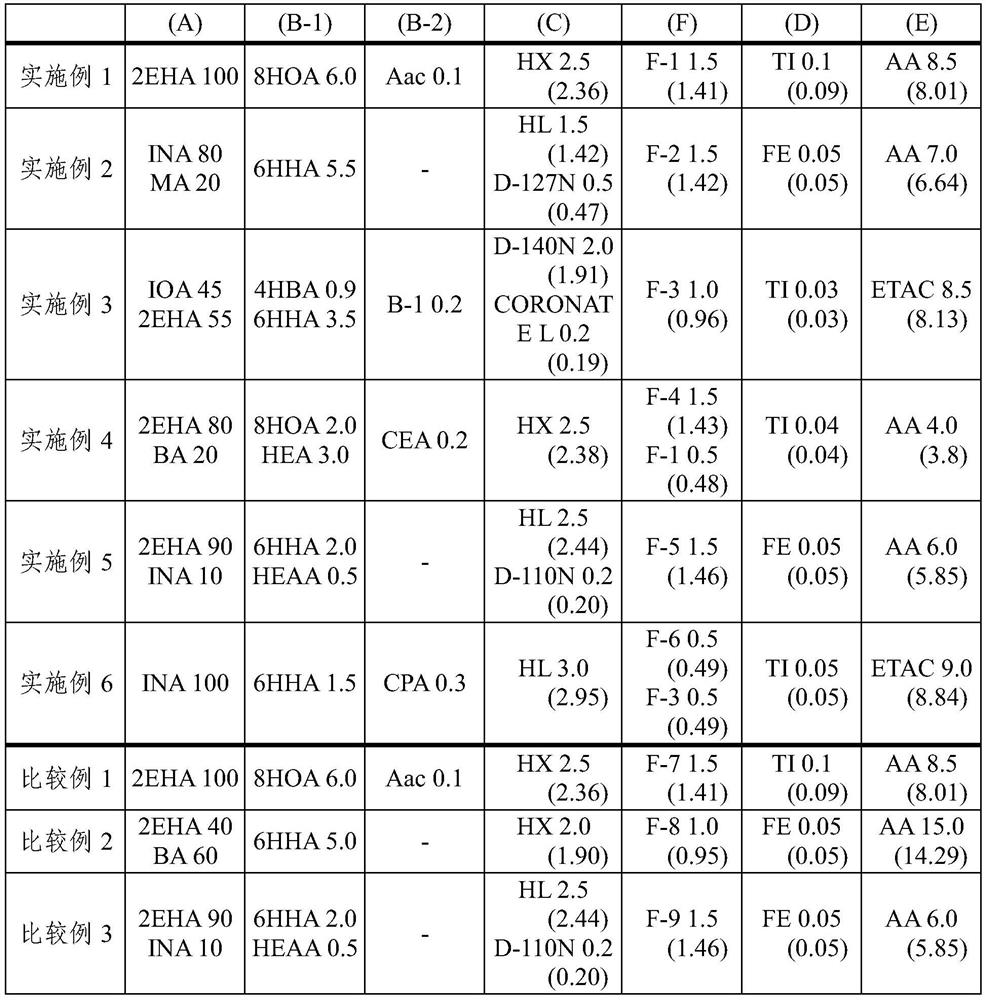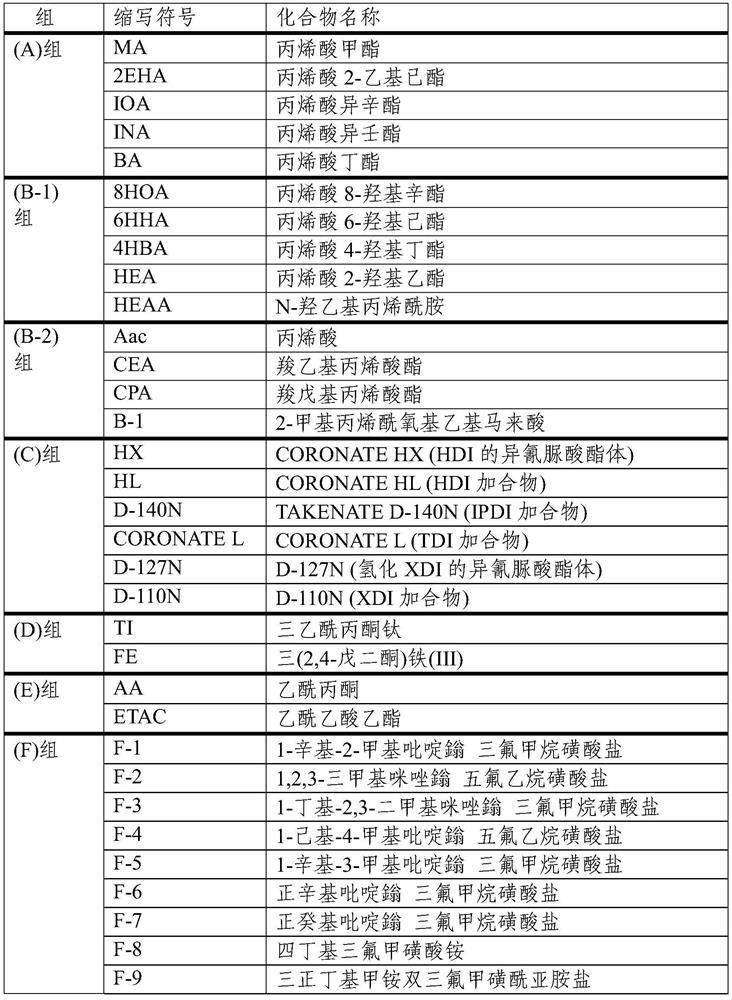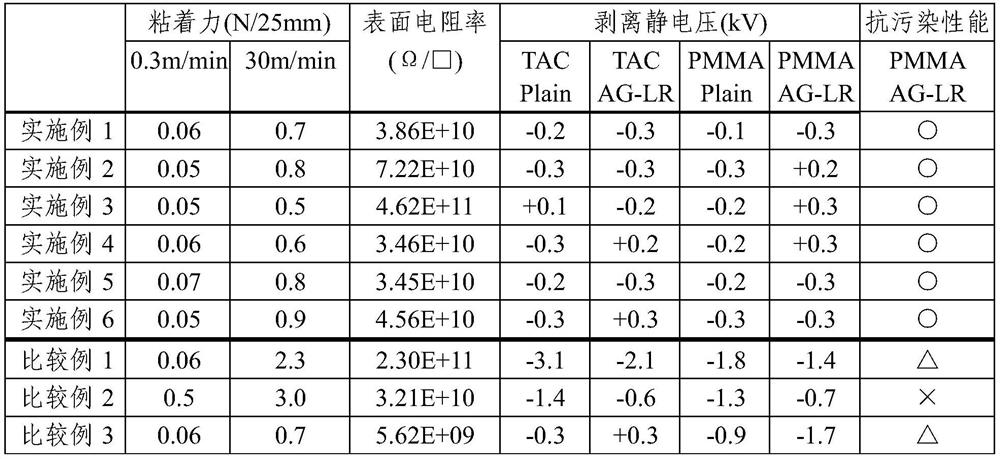adhesive composition
A composition and adhesive technology, applied in the direction of adhesives, adhesive types, conductive adhesives, etc., can solve problems such as residues and unrecorded issues, and achieve high utilization value, excellent adhesive performance, and both antistatic and antistatic properties. Effect of Pollution Performance
- Summary
- Abstract
- Description
- Claims
- Application Information
AI Technical Summary
Problems solved by technology
Method used
Image
Examples
Embodiment 1
[0104] Nitrogen gas was introduced into the reaction apparatus equipped with a stirrer, a thermometer, a reflux condenser, and a nitrogen gas introduction pipe, and the air in the reaction apparatus was replaced with nitrogen gas. Then, 100 parts by weight of 2-ethylhexyl acrylate, 6.0 parts by weight of 8-hydroxyoctyl acrylate, 0.1 part by weight of acrylic acid, and a solvent (ethyl acetate) were simultaneously added to the reaction apparatus. Then, 0.1 part by weight of azobisisobutyronitrile as a polymerization initiator was added dropwise over 2 hours, and the reaction was carried out at 65° C. for 6 hours to obtain the acrylic polymer used in Example 1.
Embodiment 2~6 and comparative example 1~3
[0106] Except that the composition of the monomers was adjusted to the descriptions in (A), (B-1), and (B-2) of Table 1, respectively, in the same manner as the above-mentioned acrylic polymer solution used in Example 1, Acrylic polymer solutions used in Examples 2 to 6 and Comparative Examples 1 to 3 were obtained.
[0107]
[0108] [Example 1]
[0109] To the acrylic polymer solution of Example 1 prepared as described above, 2.5 parts by weight of a crosslinking agent (CORONATE HX), 1.5 parts by weight of an antistatic agent (1-octyl-2-methylpyridinium trifluoro) were added methanesulfonate), 0.1 parts by weight of a cross-linking catalyst (titanium triacetylacetonate) and 8.5 parts by weight of acetylacetone were stirred and mixed to obtain the adhesive composition of Example 1. After apply|coating this adhesive composition on a mold release film (PET film coated with a silicone resin), the solvent was removed by drying at 90 degreeC, and the adhesive layer with a thickn...
PUM
| Property | Measurement | Unit |
|---|---|---|
| melting point | aaaaa | aaaaa |
| glass transition temperature | aaaaa | aaaaa |
| bond strength | aaaaa | aaaaa |
Abstract
Description
Claims
Application Information
 Login to View More
Login to View More - R&D
- Intellectual Property
- Life Sciences
- Materials
- Tech Scout
- Unparalleled Data Quality
- Higher Quality Content
- 60% Fewer Hallucinations
Browse by: Latest US Patents, China's latest patents, Technical Efficacy Thesaurus, Application Domain, Technology Topic, Popular Technical Reports.
© 2025 PatSnap. All rights reserved.Legal|Privacy policy|Modern Slavery Act Transparency Statement|Sitemap|About US| Contact US: help@patsnap.com



